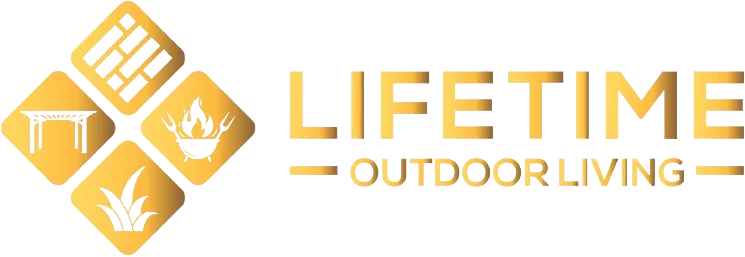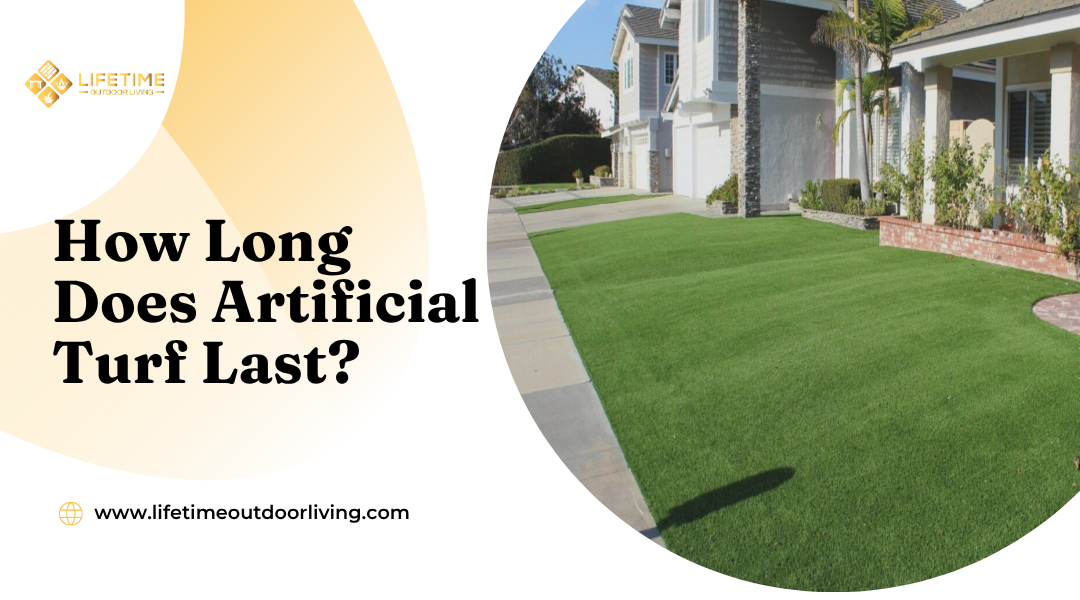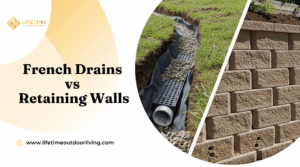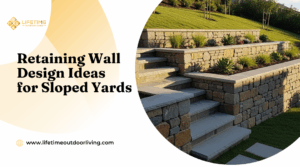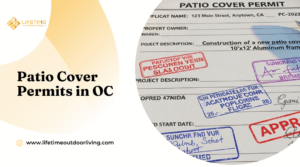Lifetime Outdoor Living, a paving contractor in Laguna Beach, California, specializes in installing synthetic grass designed to withstand regular use and the local climate. Their expertise ensures turf installations are optimized for longevity through professional base preparation and drainage systems.
This article will explore how to maximize the durability of artificial turf and what routine steps homeowners can take to keep their lawn looking fresh and functional for years to come.
What Is The Average Lifespan Of Artificial Turf?
Artificial turf typically lasts over a decade, with its lifespan influenced by various environmental and usage factors. The durability depends largely on the quality of materials and the intensity of use. Differences exist based on whether the turf is installed in a residential or commercial setting.
Industry Standards: General Lifespan Ranges (10–20 Years)
Most artificial turf products last between 10 and 20 years under standard conditions. Manufacturers often guarantee their turf for 8 to 15 years, reflecting expected wear and tear. Premium products with advanced fibers and backing tend to approach the higher end of this range.
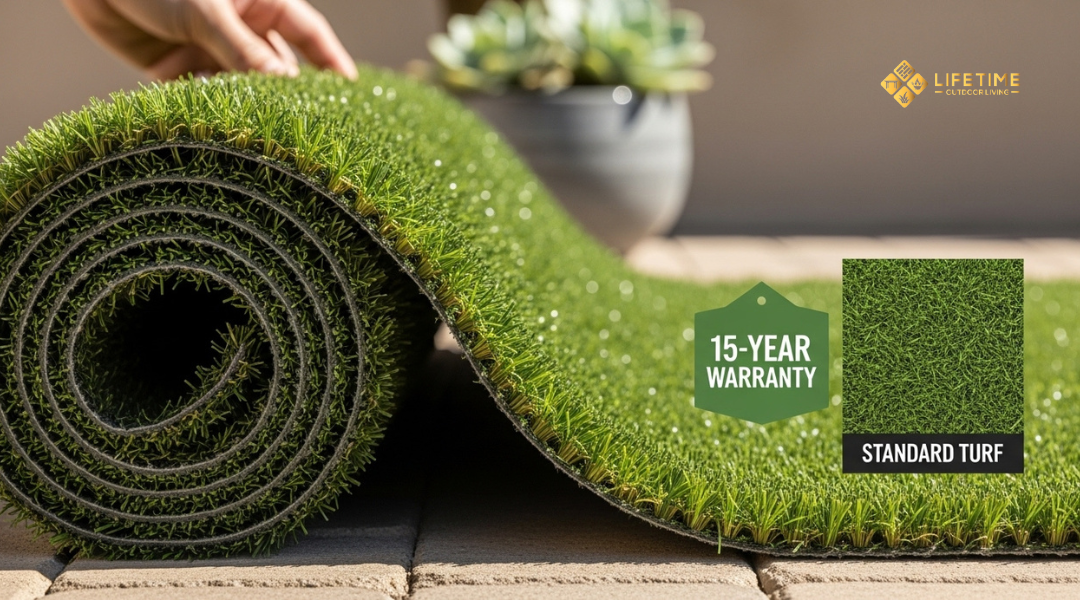
UV resistance and fiber density are key design aspects that directly impact lifespan. Maintenance routines also play a role, though material quality provides the primary durability baseline.
Factors That Influence Longevity (Usage, Climate, Material Quality)
Usage intensity greatly affects turf longevity. Heavy foot traffic or frequent sports use will reduce life expectancy. Infrequent use and low impact activities allow turf to last closer to 20 years.
Climate is critical—excessive heat, strong UV exposure, and heavy moisture can degrade fibers faster. Coastal areas like Laguna Beach may face salt air corrosion influencing synthetic fibers.
Material quality varies widely. Polyethylene fibers resist wear better than polypropylene, and stronger backing materials improve overall durability. Regular cleaning and infill replenishment extend turf life.
Comparing Residential Vs Commercial Turf Lifespans
Residential turf generally lasts 15 to 20 years, thanks to lighter foot traffic and less wear. Homeowners typically use turf for landscaping rather than intense play.
Commercial turf, used in sports fields or playgrounds, faces heavy, continuous use. Its lifespan ranges from 8 to 12 years before replacement is recommended.
Installation quality and specific product choices differ as well. Commercial-grade turf prioritizes durability and shock absorption, while residential options focus on aesthetics and moderate durability.
Key Factors That Affect Artificial Turf Durability
Artificial turf longevity depends on several key elements involving environment, use, and materials. These factors directly influence how well turf withstands wear and maintains appearance over time.
UV Exposure And Heat In SoCal’s Climate
Southern California’s strong UV rays can break down turf fibers, causing fading and brittleness. High heat, common in Laguna Beach, can accelerate this degradation if the turf is not UV-stabilized.
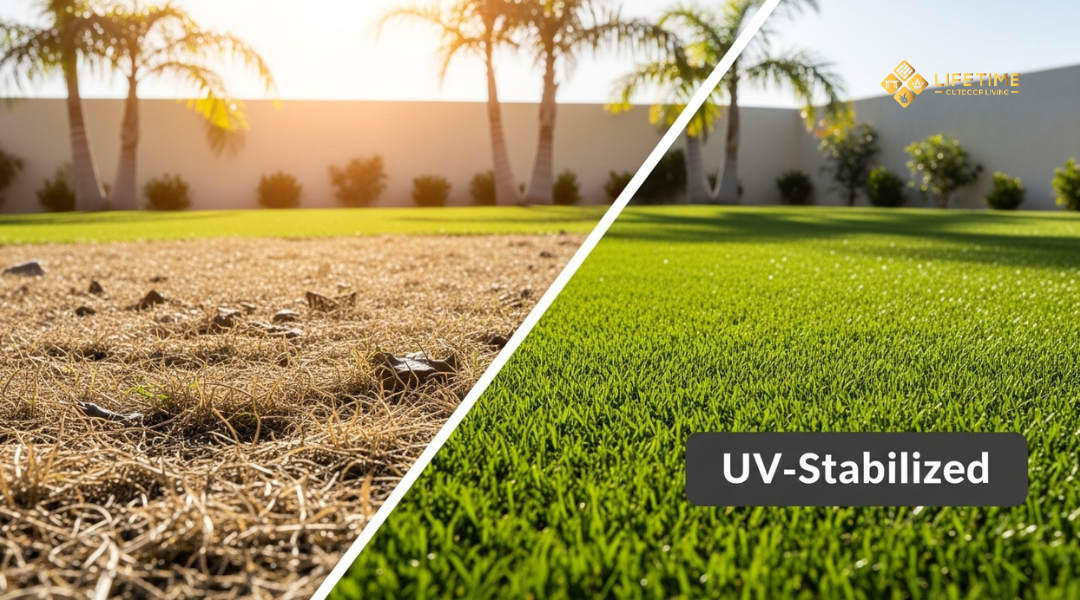
Turf with built-in UV protection resists discoloration and fiber weakening better. Proper selection of turf designed for SoCal’s climate is critical to limit damage from sun exposure and intense heat.
Foot Traffic: Pets, Kids, And Entertaining
Heavy use from pets, children, and gatherings increases wear and causes matting, reducing turf’s lifespan. Pets can cause staining and odors, while children’s play may lead to fiber crushing.
Regular maintenance such as brushing redistributes fibers and reduces compaction. Turf quality that features stronger, denser fibers will better endure consistent foot traffic without rapid deterioration.
Installation Quality And Base Preparation
Correct installation is essential to turf durability. A compacted, well-draining base prevents shifting, sinking, and water accumulation, which can damage the turf backing.
Improper base layers cause uneven surfaces and early wear spots. Professional installation with focus on grading, base materials, and turf anchoring ensures stability and longevity of the turf system.
Infill Material And Turf Backing Technology
Infill supports turf fibers and affects drainage, resilience, and usability. Options like silica sand or rubber crumb differ in durability and maintenance requirements.
Advanced turf backings with multiple layers and enhanced binding agents resist delamination and promote durability. Choosing high-quality infill and backing technology improves turf strength and lifespan under typical use conditions.
Signs That Your Artificial Turf May Need Replacement
Artificial turf shows wear in specific ways that impact both appearance and function. Key warning signs include changes in texture, color, water management, and structural integrity.
Matted Or Flattened Fibers
One clear indicator is turf fibers that appear matted or flattened. Over time, foot traffic, weather exposure, and heavy furniture can crush the blades, diminishing the natural look.
Matted fibers reduce cushioning and increase friction, making the surface less comfortable to walk or play on. Regular brushing can delay this, but persistent flattening suggests deep wear that cleaning won’t fix.
If the turf no longer stands upright or feels hard underfoot despite maintenance efforts, replacement should be considered to restore texture and comfort.
Discoloration Or UV Damage
Artificial turf is designed to resist fading, yet prolonged sun exposure can cause discoloration. UV rays break down pigments, resulting in dull or yellow patches.
Discolored turf not only looks unattractive but signals material degradation. This can reduce the product’s lifespan and weaken fiber strength.
Signs to watch for include uneven color, chalky residue, or brittle blades. If discoloration is widespread and cleaning doesn’t improve it, replacement is advisable.
Drainage Problems Or Odors
Proper drainage is essential to prevent water pooling and bacterial growth. Over time, infill materials can compact or wash away, reducing permeability.
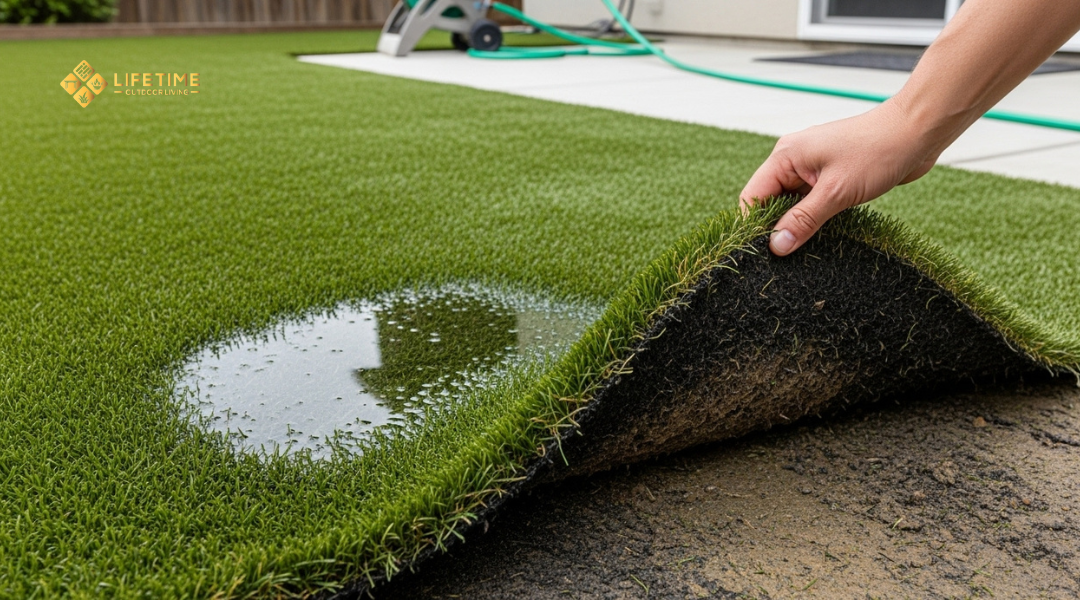
Persistent puddles, slow drying, or foul odors indicate poor drainage or trapped moisture beneath the turf. These issues can lead to mold and product damage.
Addressing drainage problems early with maintenance or infill addition helps, but persistent moisture or smell often requires turf removal and base repair.
Visible Seams Or Wrinkling
Artificial turf installation relies on seamless joins and secure edges. Over time, seams may become visible or start to separate due to ground shifting or adhesive failure.
Wrinkling or bubbling often accompanies seam issues, creating uneven surfaces that can trip users or collect debris. These defects also accelerate wear along edges.
If seams are lifting or wrinkles persist after simple adjustments, replacement of affected sections or the entire turf may be necessary to maintain safety and aesthetics.
How To Maximize The Lifespan Of Your Artificial Turf
Maintaining artificial turf requires consistent care focused on cleanliness, blade condition, drainage, and avoiding damage from equipment. Attention to these details prevents premature wear and preserves the turf’s appearance and function for years.
Regular Cleaning And Debris Removal
Removing dirt, leaves, and other debris regularly keeps the turf clean and functioning well. Using a leaf blower or a plastic rake helps to clear loose material without damaging the blades.
Pet waste should be promptly removed to prevent odors and bacteria buildup. Washing the area with water and mild soap can further maintain cleanliness. Avoid harsh chemicals, which may harm the fibers.
Regular cleaning prevents organic matter from decomposing and causing stains or mold, which shortens turf life. Establishing a weekly or biweekly routine supports long-term durability.
Brushing And Raking To Maintain Blade Height
Artificial turf fibers can flatten over time, especially in high-traffic areas. Brushing lifts the blades back upright, maintaining a natural look and feel. A stiff-bristled broom or a specialized turf brush works best.
Raking distributes the infill material evenly, which supports blade positioning and enhances cushioning. Doing this every few months reduces wear patterns and keeps the turf resilient.
Brushing should be done against the grain of the turf blades for the best effect. Avoid wire-bristled tools as they can damage the fibers.
Proper Drainage Maintenance To Prevent Mold Or Mildew
Good drainage is essential to avoid water pooling, which leads to mold and mildew growth beneath the turf. Check the drainage system regularly after heavy rain or irrigation.
Clear any clogged drains or holes and ensure the ground slope promotes water runoff. Use a water hose to flush the turf occasionally, helping to remove dirt trapped in the infill.
If any areas remain soggy for extended periods, inspect for base issues or compaction. Proper drainage extends turf life by preventing conditions that degrade the backing and fibers.
Avoiding Heavy Equipment Or Sharp Objects On Turf
Artificial turf can be damaged by heavy machinery and sharp tools. Large equipment can crush infill and compact the base, reducing drainage and causing uneven surfaces.
Sharp objects risk cutting or tearing turf fibers and the underlying backing. Avoid dragging furniture, grills, or tools across artificial grass.
If heavy items must be placed temporarily, use protective mats or boards to distribute the weight and prevent damage. Regularly inspect the turf for signs of punctures or depressions and address them promptly.
Seasonal Turf Maintenance Tips For Orange County Homeowners
Proper care varies with the seasons in Orange County’s climate. Addressing heat, debris, moisture, and pet-related issues keeps artificial turf in good condition through the year.
Spring & Summer: Managing Heat And Debris
During spring and summer, turf faces intense heat and increased dust or leaf debris. Regularly rinsing the turf with water cools the surface and removes dirt buildup.
Brushing the turf fibers with a stiff-bristled broom prevents matting caused by heat. Focus on areas with high foot traffic to maintain upright blades.
Remove fallen leaves and organic debris promptly. This avoids mold growth and discoloration. Use a leaf blower or rake carefully without damaging the turf fibers.
Fall & Winter: Preventing Water Buildup And Surface Wear
In fall and winter, managing water accumulation is critical. Ensure proper drainage around the turf to prevent pooling, which can lead to odor and fungal issues.
Regularly check for and remove fallen pine needles, acorns, or other debris that could trap moisture. Use a leaf blower or gentle rake for this task.
Limit heavy traffic on wet turf to avoid surface compaction. If the turf becomes flattened, use a power broom or stiff brush to restore the fibers once dry.
Pet Owners: Special Cleaning Routines For Hygiene And Longevity
Pet urine and waste require specific attention to maintain turf hygiene. Rinse affected areas with a hose promptly to dilute urine and prevent buildup.
Use enzyme cleaners formulated for artificial turf to break down organic matter and odors. Avoid harsh chemicals that can damage synthetic fibers.
Regularly remove solid waste with a scoop or bag. Periodic deep cleaning helps prevent bacteria growth and extends the life of the turf by keeping it sanitary.
Choosing The Right Artificial Turf For Long-Term Performance
Selecting a durable and well-constructed artificial turf is key to ensuring it lasts. Factors such as material type, weight, and design quality directly affect how the turf performs over time. Proper choices here reduce maintenance and replacement needs.
Material Types: Nylon, Polyethylene, And Polypropylene
Artificial turf primarily comes in three materials: nylon, polyethylene, and polypropylene. Nylon is the strongest, ideal for heavy foot traffic and high durability. It resists crushing but tends to be more expensive.
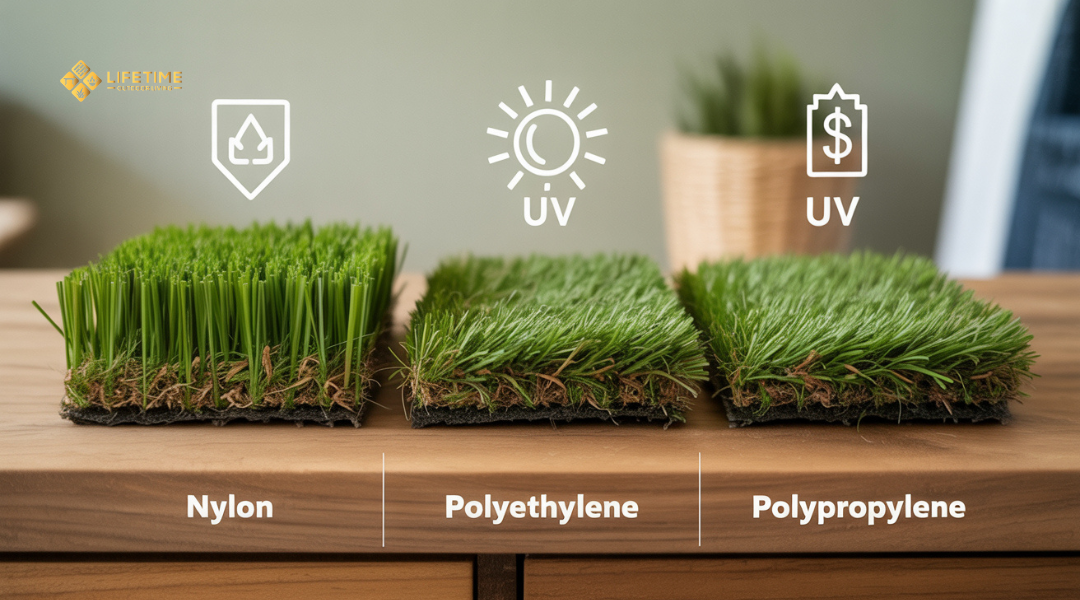
Polyethylene is softer, with a natural look and feel. It is less durable than nylon but more resistant to UV rays and stains, making it popular for residential use.
Polypropylene is the most affordable but also the least durable. It is best for decorative areas with minimal use. Understanding material strengths helps match turf to intended use and environment.
Face Weight, Pile Height, And Stitch Rate Explained
Face weight measures the amount of fiber per square yard. Higher face weight indicates denser turf, which improves durability and cushioning but may cost more.
Pile height is the length of blades. Taller piles offer better aesthetics and comfort but can mat down faster in high-traffic areas. A balance between height and durability is necessary.
Stitch rate refers to the number of rows of stitches per foot. Higher stitch rates create a stronger backing and reduce fiber loss. Turf with high stitch rates generally lasts longer and withstands wear better.
Benefits Of Premium Turf From Lifetime Outdoor Living
Lifetime Outdoor Living offers turf designed for Laguna Beach climate and use. Their premium turf features high-density fibers with UV protection to resist fading.
They use materials and construction methods focused on longevity, including reinforced backing and superior stitch rates. This results in turf that holds up to daily wear and environmental exposure.
The company also provides expert installation, ensuring turf remains secure and drains efficiently. These factors collectively extend the turf’s effective lifespan while maintaining appearance.
Lifetime Outdoor Living’s Installation And Warranty Process
Lifetime Outdoor Living ensures artificial turf is installed with precise methods, proper drainage, and solid grading to improve durability. Their warranty covers workmanship, providing clients with ongoing support after installation.
Precision Installation To Maximize Turf Longevity
The team performs careful site preparation before turf installation. This includes removing existing materials, leveling the ground, and compacting the base to prevent settling or shifting.
Turf is cut and secured using specialized tools to maintain clean seams and a uniform appearance. The use of high-quality infill material helps maintain fiber uprightness and cushioning.
Proper edge fastening prevents turf from pulling away over time. These steps reduce risks of premature wear and extend overall turf lifespan.
Integrated Drainage And Grading Solutions
Proper drainage is essential to avoid water pooling beneath the turf, which can cause damage or promote mold growth.
Lifetime Outdoor Living designs custom grading plans to ensure water flows away from hard surfaces and foundations. They install permeable bases and drainage pipes when needed.
This approach prevents soil erosion and keeps the turf stable through seasonal changes. The result is a consistently dry and safe artificial grass surface.
Lifetime Workmanship Warranty And Ongoing Support
Their workmanship warranty covers installation defects for a specified period, usually between 5 to 10 years depending on the project.
Clients receive prompt response and repair for any issues tied directly to installation. The company also offers maintenance advice to keep the turf in optimal condition.
Post-installation checkups help address potential problems early, ensuring the turf continues to perform as expected with minimal disruption.
